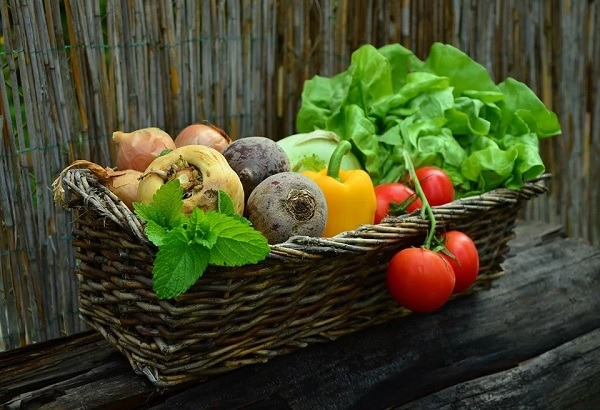Vegetable gardening can be taxing. It often requires proper planning, careful attention, patience, and the right timing to grow healthy vegetables or achieve a high yield. Nevertheless, it isn’t something so difficult nor impossible.
And while you may be tight on space, with so many modern gardening techniques nowadays—this should no longer be an issue. Moreover, if you are a newbie or have been growing crops for years with a low success rate, don’t get discouraged yet! Most likely, you just need to learn how to do it the right way, with the right things.
In this article, are valuable secrets of vegetable gardening that you certainly don’t wanna miss! So keep reading, take notes, or bookmark this page. Because these tips will help you have the vegetable garden of your dreams!
Choose the Location
Before starting your garden, look for a location that is suitable for the vegetables you intend to plant. Location is everything. Since the success of your garden highly depends on where you can grow healthy and bountiful crops.
A good location allows smooth access to essential elements like sunlight, water source, and healthy soil. Some crops require full sunlight while others thrive well in shade. Different crops also require varying amounts of water and types of soil. So you need to consider the location and the plant-care needs of your planned vegetables.
Moreover, sunlight and water are usually both crucial to growing vegetables as they are needed during the process of photosynthesis. Thus, having these natural elements in your garden would mean fresher, and higher yield. However, if you do not have enough yard space, consider planting in containers.
Type of Soil
Ordinarily, some vegetables require certain types of soil. Hence, you must do your best to provide your crops with the right type. In general, the four main types of soil are sand, clay, loam, and silt. Though, loam soil is usually the best type for vegetable gardening.
Loam soil has the following characteristics.
-
Higher pH level – A pH level between 6.0 and 7.0 is considered acidic neutral that allows nutrients and organisms like earthworm to flourish.
-
Higher calcium content – Calcium is needed for crops to grow healthy. Calcium serves as a stabilizer on various chemicals present in the soil. It also helps improve soil water retention, helps in better absorption of oxygen into the roots, including reduction of salt as it affects the root system and plant growth.
-
Gritty texture – The soil’s gritty texture allows the water to drain well and retains water and nutrients too.
But, whatever type of soil you prefer, you need to check and maintain it regularly to keep it healthy. Similarly, adding compost and other organic matter will keep your soil in good condition.
Moreover, consider raised beds if you want to create a deeper soil layer. This gardening method allows you to add nutrients that can make your soil richer while providing better drainage too. Raise beds also minimize foot stepping, allowing your soil not to get excessively compacted.
When deciding on a location and soil to use, make sure that the overall landscape design is intact and harmonious. Hiring or asking an expert landscaper may likewise help in choosing what’s best for your veggies.
Round Out the Soil
You should also round out the soil in your vegetable garden beds as it can make a huge difference. Experienced gardeners can attest to the effectiveness of this technique.
Especially if you’re opting to use raised beds, then round out the soil to make it more space-efficient. Further, doing this can increase your vegetable garden’s yields. You can do this by gently rounding your soil to form an arc.
Choose the Triangular Pattern for Planting
Paying attention to how you’re arranging your crops matters too. Stagger your crops by planting in a triangular pattern. This method is better than doing it in rows or square patterns.
Planting in triangles provides more space than any other method thereby maximizing yields. It allows you to plant up to 14% more crops in a single bed. But make sure that you aren’t spacing your crops too tightly.
The Best Vegetables for Planting
Below are five of the most nutritional and easy to plant vegetables.
-
Carrots – can grow at cooler temperatures and can thrive even in a small garden.
-
Broccoli – can withstand temperatures as low as 20ºF. It grows on well-drained soil and a pH between 6.0 and 6.8.
-
Peas – thrives even in a container, as long as it has something to climb on by building a strong trellis. Though, this crop only grows during autumn and late summer (and hardly grows during hot weather).
-
Potato – can be planted in a container so long as the soil is loose and well-drained.
-
Beets – can grow in different conditions whether hot or cold. This crop also thrives in containers.
Water Plants Carefully
Plants need water for their survival. Nonetheless, overwatering is often not a good idea. While most vegetables have different water requirements; many won’t survive overwatering. The same is true with underwatering plants.
When you overwater your crops, it will rot and die. On the other hand, underwatering has the opposite, and still, negative effect.
Aside from determining when to water your plants, your watering method matters as well. For instance, it’s best to water the soil directly instead of using a sprinkler. This helps avoid the plants from getting too wet and prevents the spread of possible fungal diseases.
You should also water gently by avoiding mud splashing onto the leaves. Moreover, avoid regular splashing. Alternatively, occasionally water your crops deeply and thoroughly to moisten the soil and the root system.

